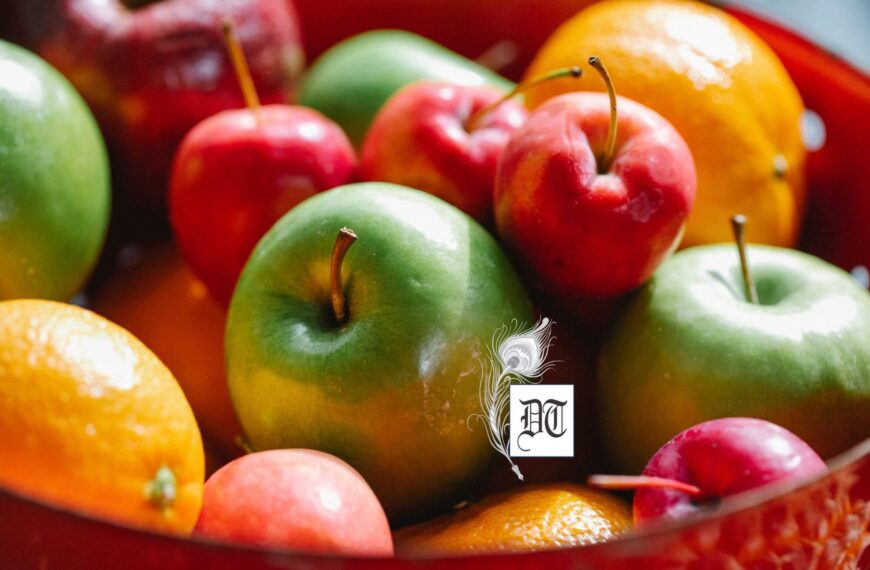Ruchira tells us about the antiquity and history of potatoes and its varied uses, in the weekly column, exclusively in Different Truths.
I am a non-vegetarian, by default, since I was born a Bengali. Nevertheless, I also include a good deal of vegetables in my daily diet, for health reasons. There is a lot you can do with vegetables; try all sorts of permutations and combinations. I have experimented a good deal on a personal plane. By far, my favourite veggie happens to be the ubiquitous potato. Yes, you have heard it right, potato, which is hailed by its nickname, Aloo/Batata – across the subcontinent.
Antecedents of Potato
Historians say that potato was domesticated first in the continent of South America – the area comprising modern-day Peru, Bolivia, and Chile –between 8000 and 5000 BC! In the centuries that followed, potato  continued to be cultivated on a large scale in the region. Following their conquest of the Inca Empire, the Spanish brought potatoes to Europe in the later part of the 16th century. Did you know that the name potato is derived from the Spanish word Patata, which is again a blend ofBatata in Taino (a Caribbean dialect) and papa in Quechua (an Inca dialect)?
continued to be cultivated on a large scale in the region. Following their conquest of the Inca Empire, the Spanish brought potatoes to Europe in the later part of the 16th century. Did you know that the name potato is derived from the Spanish word Patata, which is again a blend ofBatata in Taino (a Caribbean dialect) and papa in Quechua (an Inca dialect)?
During the era of Imperialism in Europe (1870-1914) the European mariners, not forgetting the merchants and traders carried the potato far and wide to various parts of the world where they established their colonies. The Portuguese introduced Batata (potato) to India in the early 17th century and cultivated it along the country’s west coast. British traders introduced potatoes in Bengal as a root crop. By the end of the 18th century, potato began to be commercially cultivated, across the hills of north India. It boils down to this, potato addicts like me ought to thank the conquistadors for exposing us to the wonders of potato!
Advantage Potato
I am sure most people will agree with me that potato comes in as a handy vegetable since it can withstand temperature fluctuations, does not require refrigeration and can be easily carried anywhere – as there are no chances of leakage or getting squashed. Potatoes are low in calories, enriched with vitamins C and B6, and minerals like potassium, manganese, and phosphorus. Moreover, vitamin C in potatoes acts as an antioxidant. Good reason for fitness freaks to grab some!
The fact that consumption of potato slakes one’s hunger for a considerable length of time is all the more reason for its popularity. Interestingly, the potato is the solitary vegetable, which blends well with all categories of food items: grains, fish, poultry mutton and even dairy products.
Potato Cuisine
For the number of dishes that use potatoes well, the sky is the limit! Among European (read Continental) dishes the most famous ones are British Fish & Chips, and French Fries, which are a global craze. Then you have Russian Salad, German Salad, (French) Creamy Potato Au Gratin, not missing out on the Spanish Omelette all of which use a good quantity of potatoes. Mashed potatoes – containing dollops of butter, milk, cream, besides garlic, rosemary etc for garnishing – is another popular dish. Globally popular fast food items (mainly of American origin) e.g Hamburgers, Hash Browns, Potato Chips, etc., have this tuber as its mainstay.
dishes the most famous ones are British Fish & Chips, and French Fries, which are a global craze. Then you have Russian Salad, German Salad, (French) Creamy Potato Au Gratin, not missing out on the Spanish Omelette all of which use a good quantity of potatoes. Mashed potatoes – containing dollops of butter, milk, cream, besides garlic, rosemary etc for garnishing – is another popular dish. Globally popular fast food items (mainly of American origin) e.g Hamburgers, Hash Browns, Potato Chips, etc., have this tuber as its mainstay.
Potato: In Indian Kitchens
Excepting the diet-conscious or fitness freaks – they are concentrated mainly in urban areas. An average Indian’s day begins with consuming potatoes in one form or the other. Imagine what a robust Punjabi  (Sardar included) would do without his succulent aaloo parathas laced with white butter? Moving on to Uttar Pradesh, you will find Bhaiyyajis enjoying their breakfast of piping hot, fluffy puris accompanied by spicy aaloo ki sabji. North Indian snacks viz., aloo tikki, chaat papri, bread pakora, aloo lachcha, spicy aloo chaat, most importantly the Samosa rely heavily on aaloo. It is also used in Raita –curd based side dish. Aloo appears in the main course too – in the shape of dahi aloo, aloo jeera, aloo matter, et al.
(Sardar included) would do without his succulent aaloo parathas laced with white butter? Moving on to Uttar Pradesh, you will find Bhaiyyajis enjoying their breakfast of piping hot, fluffy puris accompanied by spicy aaloo ki sabji. North Indian snacks viz., aloo tikki, chaat papri, bread pakora, aloo lachcha, spicy aloo chaat, most importantly the Samosa rely heavily on aaloo. It is also used in Raita –curd based side dish. Aloo appears in the main course too – in the shape of dahi aloo, aloo jeera, aloo matter, et al.
In Bengal, you will see the impatient Babu Moshai tucking in luchi (white puri) and aaloor dum (dum aaloo) or aloo bhaja(potato fries). Alternatively, he may demand triangular parotha (paratha) with aaloo bhaja or aloo chenchki (stir fries). When we were young, children in our family relished the standard brunch – comprising hot plain rice drizzled with ghee, with a generous helping of crispy aloo bhajas – during weekends and vacations.
In fact, Bengali gastronomy employs potatoes on a large scale perhaps like no other region. The  fabled Macher jhol uses them; large hemispherical pieces are mandatory for mutton curry; smaller wedges for egg curry and so on. Ditto for prawns and crab curries. Chhanar dalna (paneer/cottage cheese) is incomplete without it. The basic ingredients of Bengali mashed potato are mustard oil salt, chopped onion, and green/dried red chilies.
fabled Macher jhol uses them; large hemispherical pieces are mandatory for mutton curry; smaller wedges for egg curry and so on. Ditto for prawns and crab curries. Chhanar dalna (paneer/cottage cheese) is incomplete without it. The basic ingredients of Bengali mashed potato are mustard oil salt, chopped onion, and green/dried red chilies.
The quintessential Bong loves a wide range of snacks: Aloo kabli (potato mixed with grams), jhaal muri (hot and spicy potpourri of puffed rice) Phuchka (panipuri), Telebhaja (pakoras, deep fried fritters) vegetable chops and cutlets, the last two being legacies of the British Raj.
 India’s financial capital Mumbai and its adjoining regions have its fair share of aloo-based food items ranging from BatataVada to Bhelpuri to Pav Bhaji and even the obsequious Poha.
India’s financial capital Mumbai and its adjoining regions have its fair share of aloo-based food items ranging from BatataVada to Bhelpuri to Pav Bhaji and even the obsequious Poha.
Down South, the potato is amply used in Sambhar, innovative Dosas and the famous Aloo Bonda, a native of Andhra Pradesh.
It is pretty obvious that this quaint vegetable has found its way into our kitchens and indirectly into our hearts. And it is likely to stay put, for a long, long time.
©Ruchira Adhikari Ghosh
Photos from the Internet
#Potato #HistoryOfPotato #PotatoInCuisines #FoodWorldWide #FoodAndHistory #PotatoConsumption #SliceOfLife #DifferentTruths





 By
By
 By
By
 By
By